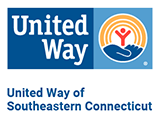Struggling to avoid the temptations of leftover Halloween candy? (I know there’s a handful of Reese’s cups still living in my purse). Luckily November, falling right between Halloween and the holidays, is good nutrition month. As I was searching for information on nutrition, I found not only healthy eating tips but an interesting and fairly recent article (August 2017) from Harvard’s Chan School of Public Health, which focused on food marketing, specifically the Box Tops for Education program. I clicked on it because I have memories of cutting along the dotted lines of those coupons on my cereal boxes with scissors (or, when I didn’t feel like getting scissors, attempting to rip the cardboard), and how we used to store them in plastic baggies in the kitchen drawer. Box Tops for Education was a consistent part of my childhood, so imagine my surprise when I found out that less than a third of participating foods in this program meet federal Smart Snacks in School standards. So what’s going on? As the article explains,
“…the Healthy, Hunger-Free Kids Act of 2010 provided guidelines for schools involved in the National School Lunch Program to stop the sale or advertising of foods and beverages that do not meet federal “Smart Snacks” standards. However, school-based brand marketing programs that encourage students and families to purchase specific products in exchange for rewards were not covered by this ruling. General Mills’ “Box Tops for Education” is one of the largest of these programs, in which over 90,000 schools have participated to earn money by collecting Box Tops from select products.”
The Harvard Chan School of Public Health’s Department of Nutrition collaborated with MassGeneral Hospital for Children to examine almost 1,000 foods and beverages that participate in the Box Tops program, and found that fewer than one third of these products met Smart Snacks guidelines. While they tended to be okay in terms of sugar, trans fat, and calories, they also tended to be high-sodium and devoid of healthy ingredients. The list of products advertised to kids under this program includes foods such as Reese’s Puff Cereal, Toaster Strudel and Gushers. According to Alyssa Moran, lead author and doctoral student in the Department of Nutrition at the Harvard Chan School of Public Health, “The Healthy, Hunger-Free Kids Act aimed to protect kids from food industry marketing in the classroom, but brand marketing programs, like Box Tops, slipped through the cracks. Even though many Box Tops products are prohibited from being sold or directly advertised in schools, General Mills is free to promote them under the guise of Box Tops for Education, which is heavily advertised to kids in schools, supermarkets, and through social media channels.” She continues: “…schools have the power to determine whether they want their students participating in brand marketing programs like Box Tops, and under what conditions they are willing to participate…school administrators, parents, and nutrition advocacy groups could also put more pressure on the food industry to make changes that limit the negative impact of food marketing to kids, and schools could choose to not participate until changes are made.”
So how do you make healthy choices when it’s so hard to trust food marketing? Harvard’s T.H. Chan School of Public Health has you covered here, too. Here are ten tips on choosing foods that will positively impact your health:
1. Choose good carbs, not no carbs. Whole grains are your best bet.
2. Pay attention to the protein package. Fish, poultry, nuts, and beans are the best choices.
3. Choose foods with healthy fats, limit foods high in saturated fat, and avoid foods with trans fat. Plant oils, nuts, and fish are the healthiest sources.
4. Choose a fiber-filled diet, rich in whole grains, vegetables, and fruits.
5. Eat more vegetables and fruits. Go for color and variety—dark green, yellow, orange, and red.
6. Calcium is important. But milk isn’t the only, or even best, source.
7. Water is best to quench your thirst. Skip the sugary drinks, and go easy on the milk and juice.
8. Eating less salt is good for everyone’s health. Choose more fresh foods and fewer processed foods.
9. Moderate drinking can be healthy—but not for everyone. You must weigh the benefits and risks.
10. A daily multivitamin is a great nutrition insurance policy. Some extra vitamin D may add an extra health boost.
Live United,
Caitlin
Sources:
https://www.hsph.harvard.edu/nutritionsource/2017/08/29/box-tops-foods-smart-snacks-standards/
